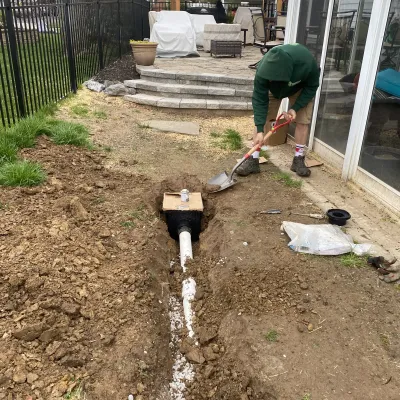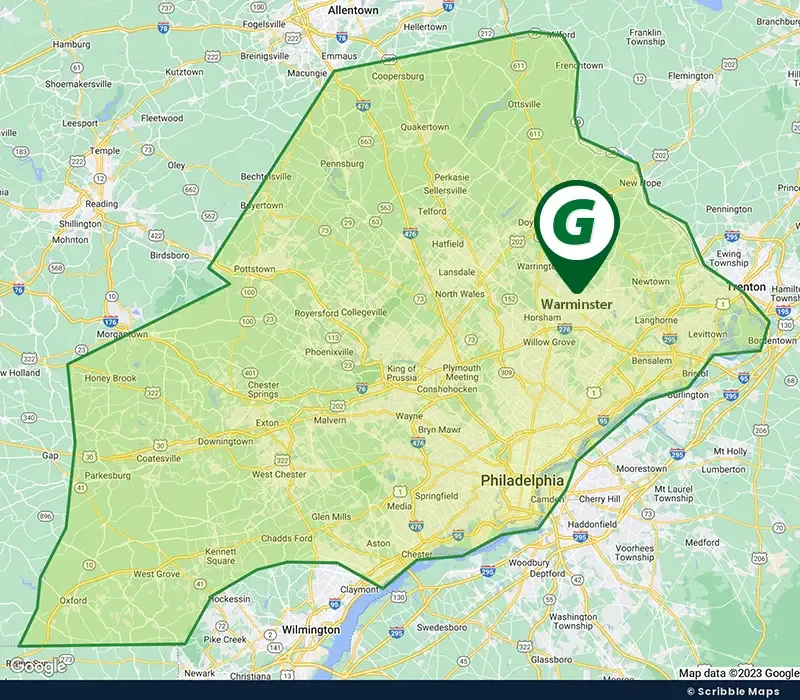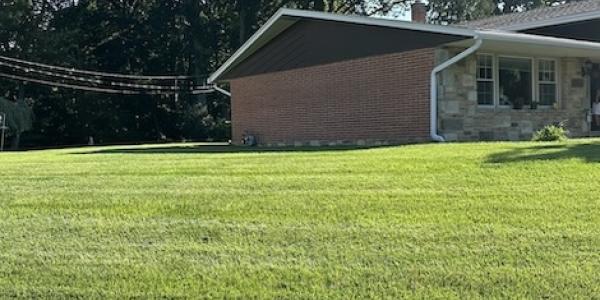Lawn Renovation & Repair in the Philadelphia Metro Area
Is your lawn looking dry, patchy, or past its prime? It’s time to consider Greenskeeper Professional Lawn Care Service, Inc for top-tier lawn renovation and repair in the Philadelphia Metro Area. With our tailored solutions, we’ll transform your outdoor space into the lush, green lawn you've always wanted, enhancing your property’s curb appeal and value.
Why Choose Greenskeeper Professional Lawn Care Service, Inc Lawn Renovation & Repair?
We understand the unique challenges of Philadelphia’s climate and soils, making our services perfect for local lawns that need a fresh start. Here’s what sets us apart:
- Complete Lawn Evaluation: We begin with a thorough assessment of your lawn’s current condition, diagnosing issues like drought damage, soil compaction, pest infestation, and disease.
- Customized Repair Plan: From reseeding to aeration and soil amendments, we craft a tailored solution to address your lawn’s specific needs.
- Professional-Grade Materials: We use only premium, eco-friendly products and materials designed to restore and protect your lawn.
Why Wait? Transform Your Lawn Today!
Bring new life to your landscape with Greenskeeper Professional Lawn Care Service, Inc's expert lawn renovation and repair services in the Philadelphia Metro Area. Say goodbye to dry, patchy grass and hello to a lawn that makes a statement!
Signs That Your Lawn Requires Repair or Replacement Services
When your lawn displays multiple signs of decline, it may be time to consider repair or replacement services to restore its vitality and aesthetics. Luckily with Greenskeeper Professional Lawn Care Service, Inc and our 43 years of experience, you can trust that your lawn will be as good as new in no time.
Signs you may need lawn renovation or repair services include:
- Brown and Bare Patches: Widespread brown or bare areas with no signs of grass growth.
- Sparse and Thinning Grass: A lawn that appears thin, with noticeable gaps between grass blades.
- Soil Compaction: Extremely hard and compacted soil that inhibits water and nutrient absorption.
- Persistent Weeds: An abundance of persistent weeds that dominate the lawn.
- No Response to Watering: Grass that does not recover or green up despite regular watering.
- Excessive Thatch: A layer of thatch that is too thick and prevents water and nutrients from reaching the soil.
- Disease or Pest Damage: Extensive damage from diseases or pests that cannot be effectively controlled.
- Invasive Species: Invasion of undesirable grass or plants that has taken over the lawn.
- Erosion and Soil Problems: Soil erosion, frequent flooding, or severe soil quality issues.
- Overall Decline: A general decline in the lawn's health, appearance, and vigor despite efforts to revive it.

Call today to schedule an inspection!
How to Make Sure Your New Yard Thrive
After investing in a new lawn, maintaining it is crucial to ensure its long-term health and beauty. Proper maintenance not only preserves your investment but also enhances your outdoor space. Here are some key tips to keep your new lawn in tip-top shape:
- Regular Watering: Adequate and consistent watering is essential, especially during the establishment phase.
- Proper Mowing: Maintain the correct grass height to encourage healthy growth and prevent stress on your lawn.
- Fertilization: Provide essential nutrients through fertilization to promote lush, vibrant grass.
- Weed Control: Prevent weeds from taking hold by implementing a weed control program.
- Aeration: Periodic aeration ensures proper airflow and nutrient absorption in the soil.
- Disease and Pest Management: Keep an eye out for signs of disease or pest infestations and address them promptly.
- Overseeding: Periodic overseeding helps maintain a dense and resilient lawn.
By following these steps, you'll not only protect your new lawn investment but also enjoy a lush, thriving outdoor space for years to come.
Best Watering Practices for a New Grass
Unlike a typical watering schedule, new grass needs more frequent watering. Remember, rain can count as water if it is significant enough.
- Mist It – The first few days after seeding, mist your grass four times a day to keep the top ¼ inch of the seedbed moist without oversaturating.
- Water It – Then water every 3-4 days for 20-30 minutes
- Keep It Wet – It is important to keep the area from drying out to support germination. We recommend watering for 5-10 minutes on all in-between days.
- Don’t Over Water – Try not to let the newly seeded area puddle or wash away. Once the grass grows to be about 2 inches, you can resume longer, less frequent waterings.

Areas We Service in the Philadelphia Metro Area
As a locally owned lawn care company, we’re proud to service all counties that surround Philadelphia. Check out each page to find your city.




